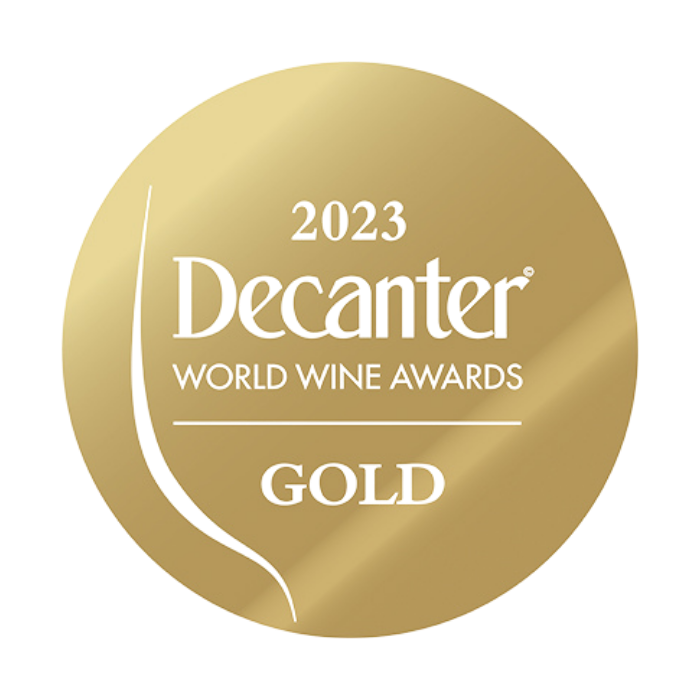Tselepos Amalia Brut, 375 ml
€9.80 (incl. BTW)
Op voorraad
- Klanten geven ons een 4,9/5,0
- Gegarandeerd de beste kwaliteit
- Voor 08:00 besteld, morgen in huis!
- Gratis verzending vanaf €150 in Nederland
Veilig en vertrouwd betalen met:
Eigenschappen
| Merk |
Tselepos |
|---|---|
| Lekker bij |
Vis |
| Regio |
Mantineia |
| Smaakprofiel |
Fris |
| Druifsoort |
Moschofilero |
Omschrijving
Na vele vragen hebben we de mousserende wijnen van Tselepos aan ons assortiment toegevoegd. De familie Tselepos maakt prachtige mousserende wijnen van de moschofilero druif. Zeker de moeite waard om te proberen! Een mousserende wijn met een lichte citroengroene kleur, delicate bubbels en aroma’s van citrusbloemen, honing, brioche en roos, vergezeld van knapperige zuren. Voor de productie van de basiswijn wordt gebruik gemaakt van een vroege oogst. Na afkoeling worden de druiven in hun geheel geperst. De most wordt overgebracht in roestvrijstalen tanks waar hij bij lage temperaturen vergist wordt. De traditionele methode “champenoise” wordt gebruikt door een tweede gisting in de fles te forceren. De wijn blijft 9-12 maanden op de wijnmoer voordat hij wordt gedegorgeerd. Een elegante mousserende wijn met een licht citroengroene kleur en fijne bubbels met intensiteit en persistentie na verloop van tijd. Aroma’s van citrusbloemen en honing, met een vleugje brioche en rozentonen. Het mondgevoel wordt gekenmerkt door tonen van gist en gebakken toast, aangevuld met knapperige zuren.
Goed te combineren met:
Rauwe zeevruchten, sushi, zachte kaas en fruitsalade.
Methode Traditionnelle
Yiannis Tselepos, die zijn rijke ervaring uit Frankrijk meedraagt, heeft met succes getracht een mousserende wijn van Moschofilero volgens de traditionele methode te vinifiëren, waarmee hij de weg heeft geëffend voor de productie van andere mousserende wijnen van inheemse rassen. De traditionele methode onderscheidt zich van andere methoden voor het maken van mousserende wijn, omdat het wijnen oplevert met geïntegreerde bubbels van betere kwaliteit, een complexer karakter en meer rijpingspotentieel. Het domein, met een lange traditie in de productie van mousserende wijn, biedt een reeks etiketten met verschillende rijpingsperiodes “op de wijnmoer” in de fles, met als doel de onderscheidende kenmerken van de inheemse variëteiten in de uiteindelijke mousserende wijn te behouden en te bevorderen.
- Eerste gisting – De eerste gisting resulteert in een basiswijn met veel zuur en weinig alcohol.
- Tirage – Een mengsel van suiker, wijn en gist (Liqueur de Tirage) wordt aan de barwijn toegevoegd.
- Tweede gisting – De tweede gisting produceert CO2, waardoor de wijn gaat bruisen. De wijn blijft in de fles om te rijpen in contact met de dode gistcellen.
- Rillen – De flessen worden dagelijks omgekeerd en gedraaid om de droesem (dode gist) langzaam naar de hals van de fles te verplaatsen.
- Invriezen – De droesem in de hals van de fles wordt ingevroren in een gekoelde pekel, wat resulteert in een leesbaar ijsblok.
- Afgieten – Wanneer de fles rechtop wordt gezet en de dop wordt verwijderd, wordt het bevroren droesemblok door de druk in de fles uitgestoten.
- Dosering, kurken, etikettering – De dosering (Liqueur d’Expedition) wordt toegevoegd en de fles wordt gekurkt. Over de kurk wordt een draadkorf aangebracht om hem onder druk op zijn plaats te houden en het etiket wordt aangebracht. De wijn is klaar om van te genieten.
Alcohol:
12%

 Olijfolie en olijven
Olijfolie en olijven  Wijn en bubbels
Wijn en bubbels  Ouzo, tsipouro, Griekse dranken
Ouzo, tsipouro, Griekse dranken  Grieks bier
Grieks bier  Koffie, thee, frisdrank, sappen
Koffie, thee, frisdrank, sappen  Souvlaki, gyros, vlees, vega
Souvlaki, gyros, vlees, vega  Diepvries
Diepvries  Vis
Vis  Zuivel
Zuivel  Zoet
Zoet  Chips, snacks, kauwgom
Chips, snacks, kauwgom  Dakos, brood, toastjes
Dakos, brood, toastjes  Pasta, rijst, peulvruchten
Pasta, rijst, peulvruchten  Conserven
Conserven  Kruiden en specerijen
Kruiden en specerijen  Balsamico, azijn, saus
Balsamico, azijn, saus  Honing, beleg, ontbijt
Honing, beleg, ontbijt  Groente en Fruit
Groente en Fruit  Koken en bakken
Koken en bakken  Baby en kind
Baby en kind  Wijnpakketten en geschenken
Wijnpakketten en geschenken  Verzorging
Verzorging  Keuken en thuis
Keuken en thuis  Volkoren, biologisch, mastiek
Volkoren, biologisch, mastiek 







